I heard about stuffed animal sleepovers from my sister Abby, the children’s librarian. Children’s librarians have been hosting stuffed animal sleepovers at their libraries for some years now. I thought it would be fun to do one for my congregation, but the time never seemed quite right. But now, when children aren’t allowed to go into the congregation’s buildings due to the pandemic, is the perfect time for a stuffed animal sleepover.
So here’s how you can host a stuffed animal sleepover at your congregation.
The end result of a stuffed animal sleepover is a photo album that you post on Facebook or other social media platform. I started out by looking at a couple of Abby’s photo albums from her stuffed animal sleepovers at the Harvard, Mass., public library: the 2019 Stuffed Animal Sleepover and the 2018 Stuffed Animal Sleepover. And for your reference, here’s our 2020 Stuffed Animal Sleepover.
Abby pointed out some of the educational content in what seems like light-hearted fun. In the course of the sleepover, the stuffed animals see some of the library’s resources that might be of interest to children; they look at some books that Abby wanted to make more widely known; and they became familiar with the library building as a place that was both fun and welcoming to children.
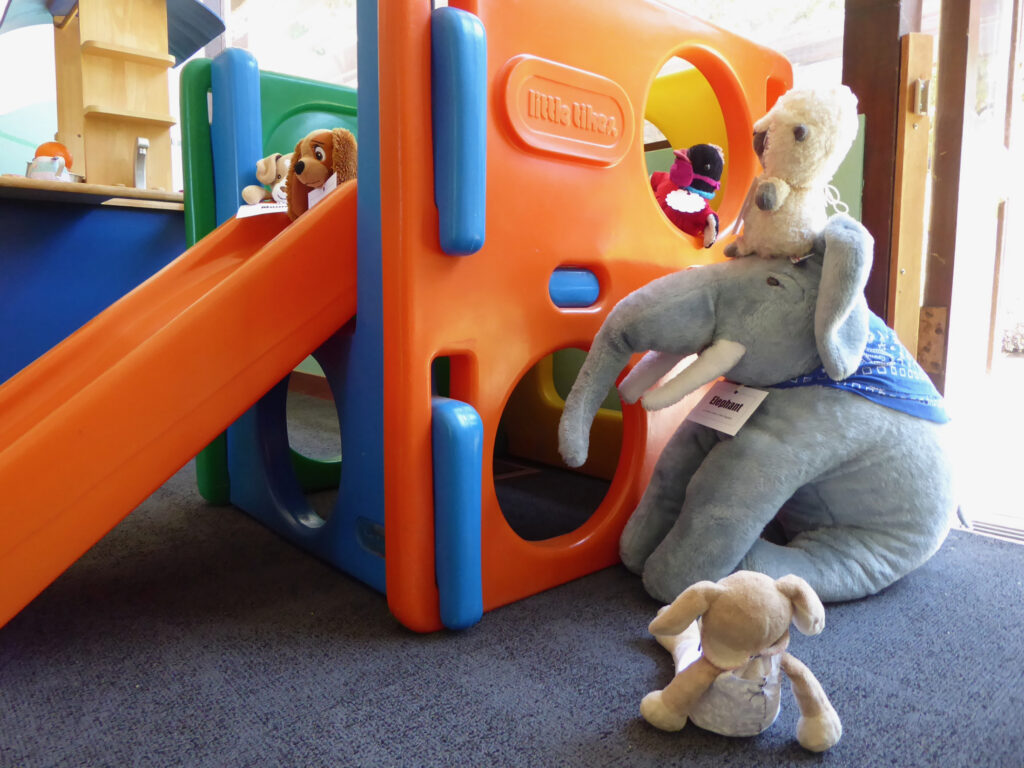
That helped me establish my own educational content. In my congregation, our primary educational goal is to have fun and build community. This is both a practical goal — organized religion is very much an optional activity in our culture, and if it isn’t fun then families are less likely to remain involved — and an idealistic goal — religious education is not mere preparation for life, it is learning by doing, learning how to build the beloved community by creating community in religious education settings. So in my congregation, a Stuffed Animal Sleepover is going to be light-hearted fun for kids, it’s going to promote a feeling of identity with the congregation, and it’s going to show stuffed animals living in beloved community.
With that idea in mind, I began to write out a script for the photos I wanted to take. Because children have now been away from our building for three months, I wanted to show remind them what their classrooms and other places on campus look like. I wanted to incorporate some of the basic rituals of congregational life, including lighting a flaming chalice, drinking hot chocolate (in surveys with children, over 90% of kids report hot chocolate as a favorite part of our congregation), and being in a worship service in our Main Hall.
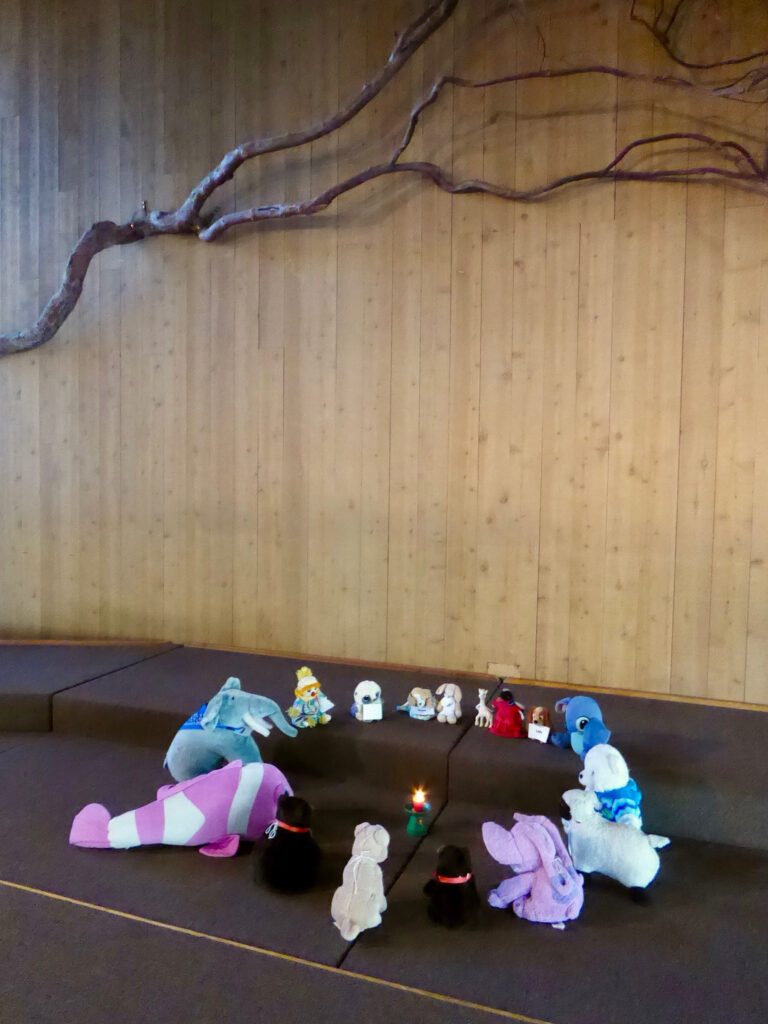
The actual written script didn’t go into all this high-level stuff, though. My script was terse and practical. Here’s an excerpt:
Saturday morning:
Room 10:
Brunch
[Props: Granola, hot chocolate]
Lighting chalice, check-in
[Props: chalice, candle, matches]
Room 7:
Play time
[Props: play equipment already in the room]
Room 6:
Playing games
[Props: board games]
Coloring
[Props: crayons, coloring pages]
POST PHOTOS TAKEN THUS FAR
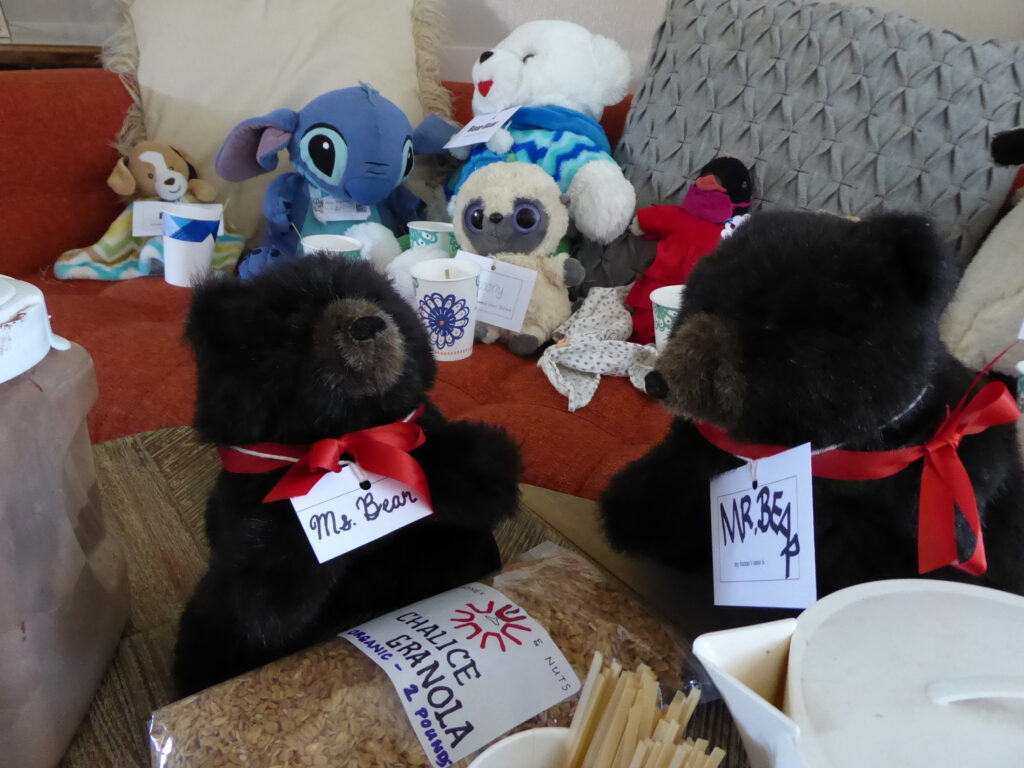
Our campus is spread out, so I used a wagon to carry the stuffed animals from one location to the next. The wagon also allowed me to show more of the campus: I could leave the stuffies in the wagon, as if they’re going on a tour, and take photos of them admiring parts of the campus.
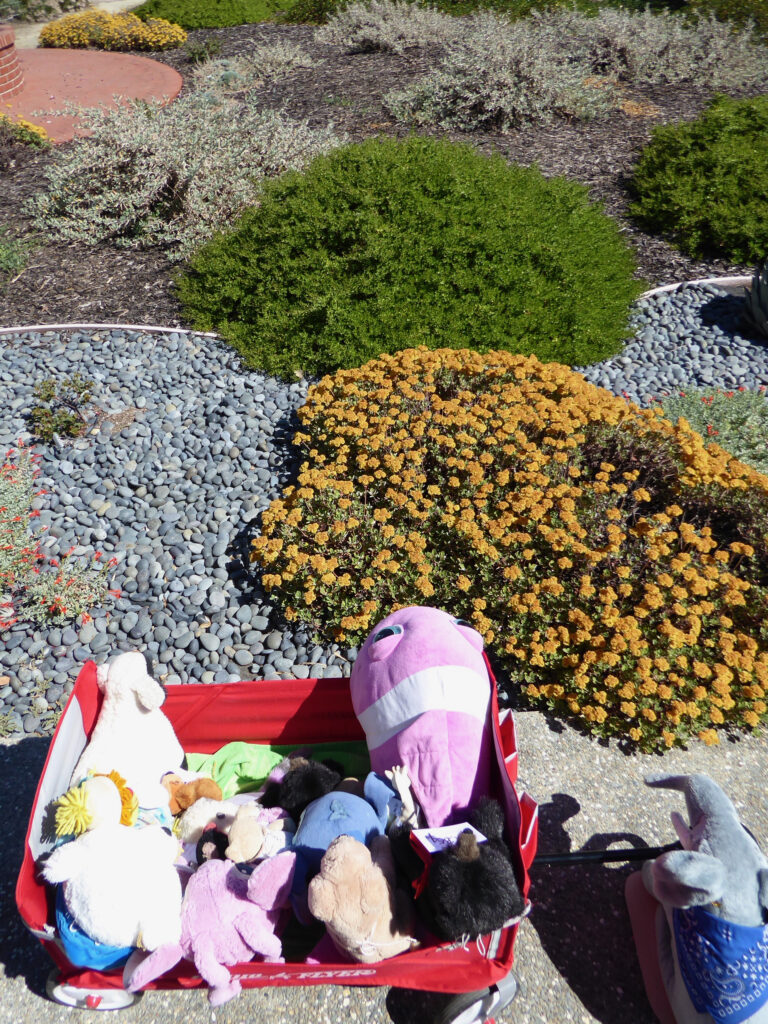
The captions you write are just as important as the photos themselves. In the captions, you find out that the stuffed animals vote when they’re making important decisions; you learn that some of the stuffies identify as LGBTQ+; you discover that the stuffies have conversations about race and racism; etc.
I was also able to showcase some of my favorite cooperative board games, and I could highlight some books to which I wanted to draw attention.
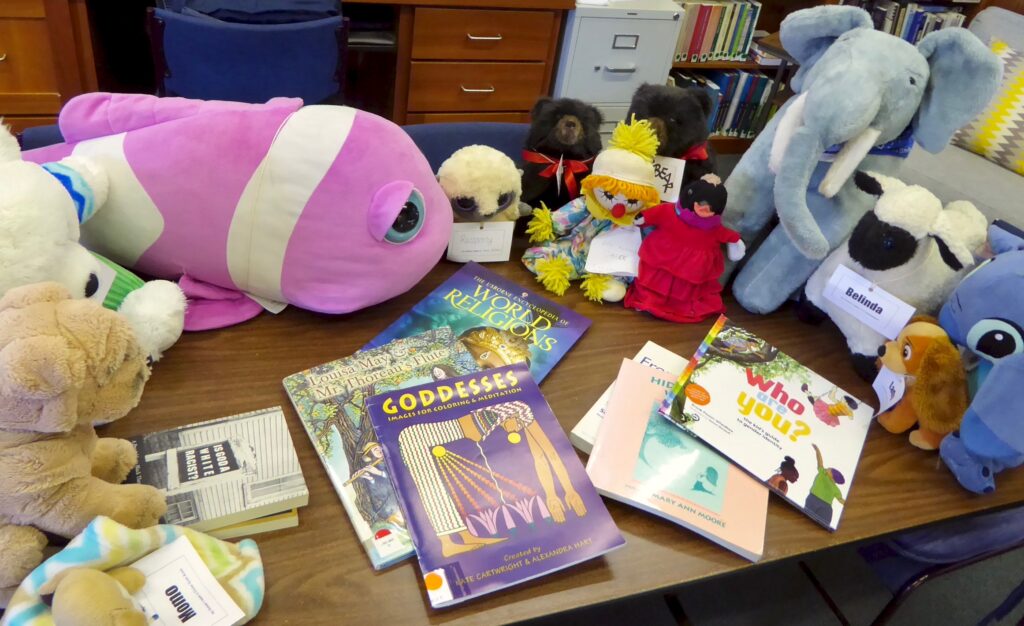

I created an online registration form for the stuffed animals. Mostly, I wanted to have the cell phone and name of the adult who was going to be dropping off the stuffed animal. But, at the instigation of my sister, I added questions like: What time does your stuffie have to go to bed? and What kind of snakc is your stuffed animal allowed to have?
Publicity started going out 3 weeks before the event, with an announcement in the monthly religious education newsletter. I made a two and a half minute video with the two chaperones, two plush puppets named Mr. and Ms. Bear who were going to be the chaperones of the event, and this video was aired during the congregation’s online worship service the week before the event. Then I sent out email announcements 3 days before, and the day before. Out of a total enrollment of 112 children and teens, 10 children brought stuffies to participate. (Several other parents told me that their child couldn’t bear to part with a stuffie; some families just plain forgot; and some more families reported that their family didn’t understand what it was all about, but now that they knew they would participate the next time.)
I spent most of Wednesday prepping rooms for photos. A homeless shelter had just vacated our rooms a few days before, so I did some touch-up cleaning, arranged furniture the way kids would remember it, etc. More importantly, I got props ready — story books, games, snacks, etc., were either placed in the room where they’d be used, or were placed in paper bags ready to carry to the appropriate room.
Drop-off for stuffies was Friday evening. I asked that stuffies be brought in a paper bag, and told everyone that they were going to be left overnight in quarantine (actually to minimize my own risk of getting COVID-19 from a stuffie). I posted a few photos of the check-in process on Facebook, to build some initial interest.
Saturday was a 12 hour day. I planned to take between 80 and 90 photos (I actually wound up taking 83 on Saturday). Moving stuffies from room to room, arranging the stuffies and props, taking extra photos just in case, uploading photos to Facebook and writing cpations — it all takes time. I managed an hour for lunch, and half an hour for dinner. Bed time for the stuffies was 8 p.m., but then I spent another hour or so cleaning up.
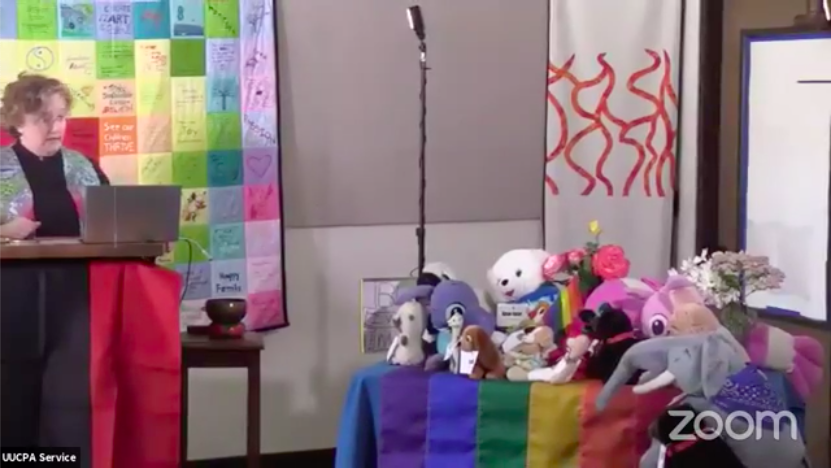
Then on Sunday morning, the stuffies appeared in the livestreamed service. Arranging them, and lighting them, took more time of course. Then once the service was over, I returned them to their paper bags, and spent the afternoon waiting for families to come pick them up again.
As my sister Abby warned me, doing a Stuffed Animal Sleepover takes hours and hours of time; I spent most of my forty hours this past week on the sleepover. The response — both from the children, and from adults with no children — has been overwhelmingly positive. Plus this is the perfect activity for this pandemic– yes the stuffies are cute, yes there’s some obvious educational content — but right now people of all ages just want to see the campus that they spent so many happy hours in before shelter-in-place.
